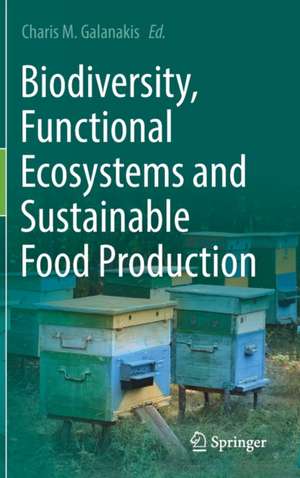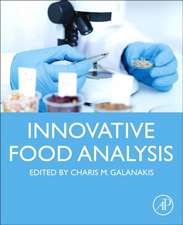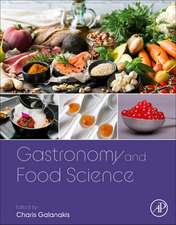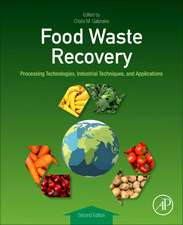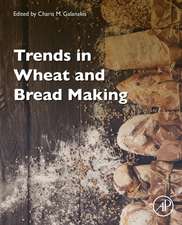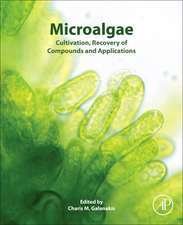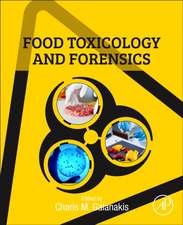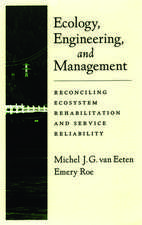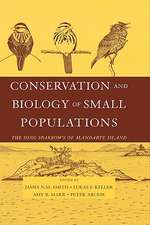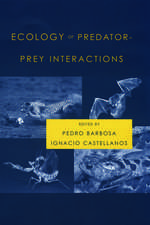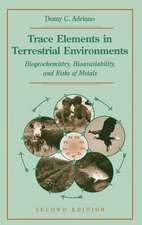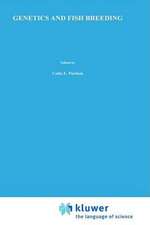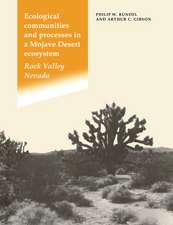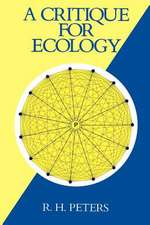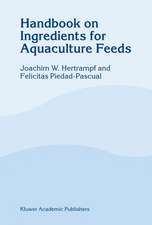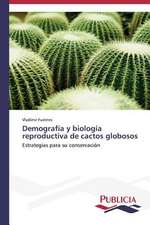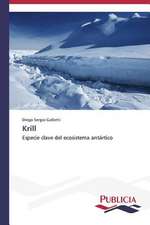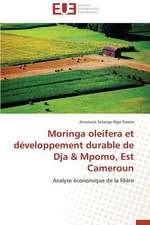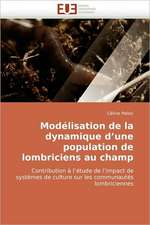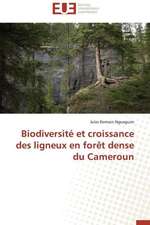Biodiversity, Functional Ecosystems and Sustainable Food Production
Editat de Charis M. Galanakisen Limba Engleză Hardback – 13 oct 2022
Biodiversity, Functional Ecosystems, and Sustainable Food Production explore ecosystems in terms of crop and animal production, pest and disease control, nutrient cycling, and soil fertility. Chapters range from agro-biodiversity to antimicrobial use in animal food production to microbiome applications for sustainable food systems and the impacts of environment-friendly unit operations on the functional properties of bee pollen. By examining such topics about each other, the text emphasizes how food production, ecosystem function, food quality, and consumer health are all interconnected.
| Toate formatele și edițiile | Preț | Express |
|---|---|---|
| Paperback (1) | 947.85 lei 6-8 săpt. | |
| Springer International Publishing – 14 oct 2023 | 947.85 lei 6-8 săpt. | |
| Hardback (1) | 953.82 lei 6-8 săpt. | |
| Springer International Publishing – 13 oct 2022 | 953.82 lei 6-8 săpt. |
Preț: 953.82 lei
Preț vechi: 1163.20 lei
-18% Nou
Puncte Express: 1431
Preț estimativ în valută:
182.54€ • 189.87$ • 150.69£
182.54€ • 189.87$ • 150.69£
Carte tipărită la comandă
Livrare economică 14-28 aprilie
Preluare comenzi: 021 569.72.76
Specificații
ISBN-13: 9783031074332
ISBN-10: 3031074335
Pagini: 354
Ilustrații: X, 354 p. 90 illus., 40 illus. in color.
Dimensiuni: 155 x 235 mm
Greutate: 0.69 kg
Ediția:1st ed. 2023
Editura: Springer International Publishing
Colecția Springer
Locul publicării:Cham, Switzerland
ISBN-10: 3031074335
Pagini: 354
Ilustrații: X, 354 p. 90 illus., 40 illus. in color.
Dimensiuni: 155 x 235 mm
Greutate: 0.69 kg
Ediția:1st ed. 2023
Editura: Springer International Publishing
Colecția Springer
Locul publicării:Cham, Switzerland
Cuprins
1. Agro-biodiversity across the food chain.- 2. Emerging risks to plant health.- 3. Future-proofing Plants against Climate Change- A path to ensure Sustainable Food Systems.- 4. The role of Integrated Pest Management for sustainable food production: The soybean example.- 5. (Alternative approaches to pesticide use): Plant-derived pesticides.- 6. Antimicrobial use in animal food production.- 7. Impacts of environment-friendly unit operations on the functional properties of bee pollen.- 8. Microbiome applications for sustainable food systems.- 9. Healthier and sustainable food systems: integrating underutilized crops in a ‘Theory of Change Approach.- 10. Alternative proteins for food and feed.
Notă biografică
Dr. Charis Galanakis is the executive director of Galanakis Laboratories, a chemical analysis and innovation center founded in 1925. He has over 20 years of experience analyzing wine, food, beverages, and environmental samples and consulting for related industries and local producers. Dr. Galanakis is also an Adjunct Professor of Taif University and the founder of the Food Waste Recovery Group of ISEKI Food Association, based in Vienna.
Textul de pe ultima copertă
In recent decades, practices like the cultivation of a few high-yielding crop varieties on a large scale, the application of heavy machinery and continued mechanization of agriculture, the removal of natural habitats, and the application of pesticides and synthetics have resulted in the simplification of agro-ecosystems. This has enabled a substantial increase in food production but has at the same time transformed landscapes. Indeed, there is a concern that a decline in biodiversity has affected microbiome activities that support processes across soils, plants, animals, the marine environment, and humans. Although they have increased food production, the above practices cannot be considered sustainable in long-term applications.
Biodiversity, Functional Ecosystems, and Sustainable Food Production explore ecosystems in terms of crop and animal production, pest and disease control, nutrient cycling, and soil fertility. Chapters range from agro-biodiversity to antimicrobial use in animal food production to microbiome applications for sustainable food systems and the impacts of environment-friendly unit operations on the functional properties of bee pollen. By examining such topics about each other, the text emphasizes how food production, ecosystem function, food quality, and consumer health are all interconnected.
Biodiversity, Functional Ecosystems, and Sustainable Food Production explore ecosystems in terms of crop and animal production, pest and disease control, nutrient cycling, and soil fertility. Chapters range from agro-biodiversity to antimicrobial use in animal food production to microbiome applications for sustainable food systems and the impacts of environment-friendly unit operations on the functional properties of bee pollen. By examining such topics about each other, the text emphasizes how food production, ecosystem function, food quality, and consumer health are all interconnected.
Caracteristici
Describes how a decline in biodiversity has affected processes across soils, plants, animals Explores such diverse topics “future-proofing” our plants, improving animal welfare Discusses the interconnections between food production and quality, consumer health
